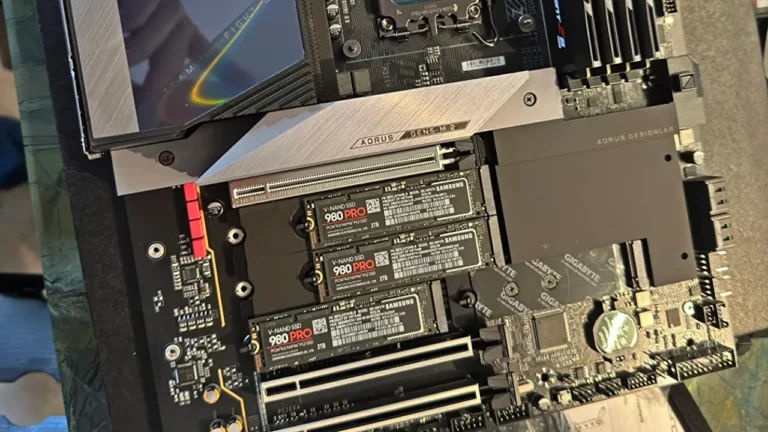When you think about boosting your computer’s speed and reliability, SSDs are the way to go. They’re like the cool, high-tech cousins of the old-school hard drives. What makes them special? They store data on flash memory, which is super quick and doesn’t make a peep, plus they’re tough as nails compared to the traditional hard drives.
But not all SSDs are the same – you’ve got different types, and the way they connect to your computer can vary. In this article, we are going to talk about two of the big players in the SSD world: NVMe and SATA. They’re kind of the rockstars of the quick Solid-State Drives, but each has its own style and way of doing things. So, let’s talk about which one you should choose between NVMe SSD and SATA SSD.
Difference Between NVMe SSDs and SATA SSDs
Here’s the breakdown of the NVMe and SATA SSDs – these are crucial components to your computer hardware for a speed boost, but each one works a bit differently.
First up, NVMe, short for Non-Volatile Memory Express. It links with your system using the PCIe bus, which is like a super-fast bus inside your computer. PCIe is used for a bunch of stuff, like graphics cards and other components. NVMe uses PCIe’s fast lanes to move data at lightning speeds, way quicker than SATA.
Alternatively, SATA or Serial ATA is more like a reliable older car. It’s been around since 2000 and was a big step up from the even older PATA standard. SATA was great back in the day, making things much faster. With SATA III, the latest version, you get speeds up to 600 MB/s. It connects to your PC or laptop using its own special SATA connector. To talk to your system, it uses an interface called AHCI.
NVMe SSDs are like sports cars compared to SATA’s dependable family sedan. NVMe can send and receive data at a breakneck pace, offering way better performance. It directly connects to your server or CPU using PCIe, while SATA uses its own bus, which is a bit slow.
For example, according to some independent benchmark results, here are some average speeds for different types of NVMe vs SATA drives:
- Samsung T7 Touch: An external NVMe drive with a capacity of 1 TB that uses PCIe 3.x interface.
- Read speed: Up to 1 GB/s
- Write speed: Up to 1 GB/s
- Samsung T5: An external SATA drive with a capacity of 1 TB that uses the SATA III interface.
- Read speed: Up to 540 MB/s
- Write speed: Up to 515 MB/s
- Crucial P5: An internal M.2 NVMe drive with a capacity of 1 TB that uses PCIe 3.x interface.
- Read speed: Up to 3 GB/s
- Write speed: Up to 3 GB/s
- Crucial P5 Plus: An internal M.2 NVMe drive with a capacity of 1 TB that uses PCIe 4.x interface.
- Read speed: Up to 7 GB/s
- Write speed: Up to 7 GB/s
As you can see from these numbers, there is a big difference between NVMe vs SATA in terms of speed and performance. NVMe drives are much faster than SATA drives in both read and write operations.
If you have a SATA drive in your system and are eyeing the most advanced NVMe drives, hold on, don’t rush to swap them out just yet. There are a few things to consider that might make you appreciate your good old SATA drive a bit more:
- Price: NVMe drives cost more than SATA drives, as they use newer and more advanced technology.
- Compatibility: NVMe drives are the new kids on the block and might not play well with older systems. If your computer doesn’t support NVMe or PCIe tech, then a SATA drive is your best bet. SATA drives fit almost any hardware with a SATA port, no matter the SATA generation. You can also use them with different operating systems, such as Windows, Mac, Linux, and Android.
- Capacity: SATA drives often come in larger sizes because they use the 2.5-inch form factor, which can hold more memory chips. For example, the Samsung 870 QVO SATA SSD offers 8TB of storage, while the Samsung 980 Pro NVMe SSD tops out at 2TB – that’s four times the storage with SATA.
So, it depends on what you need, your budget, and what you prefer. Both have their perks, so the best choice? It’s totally up to you.

